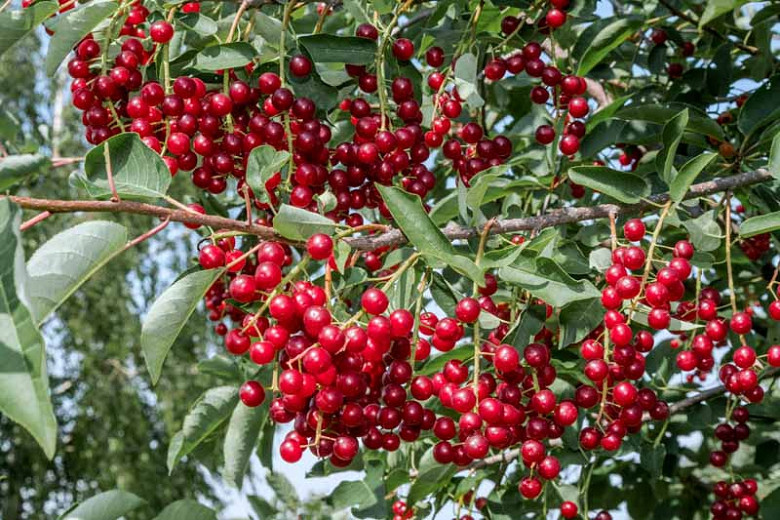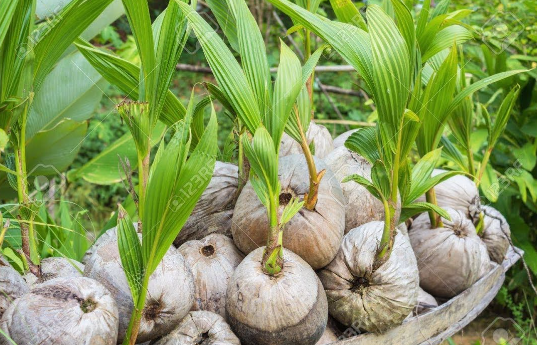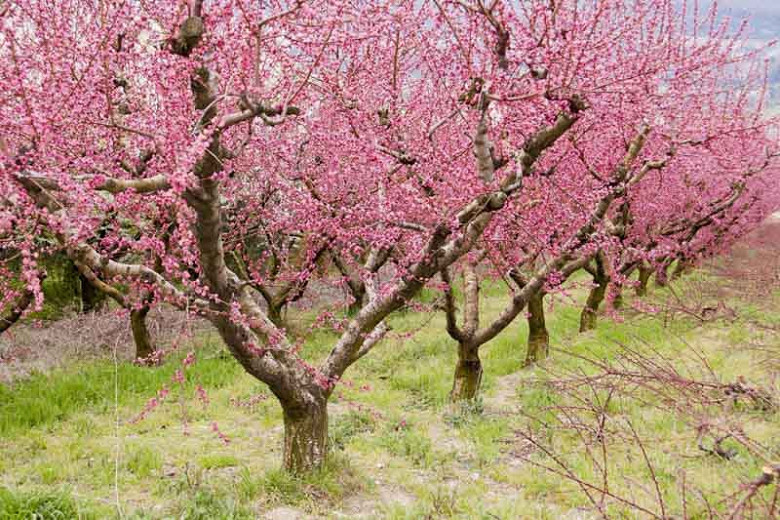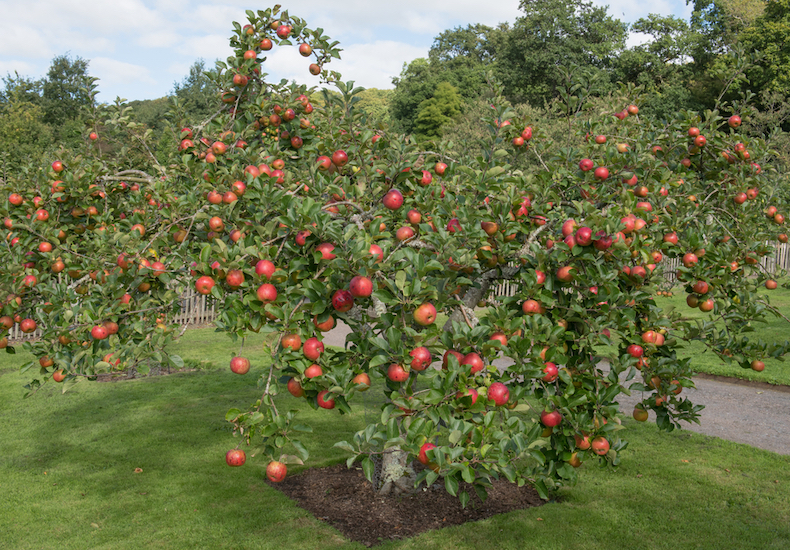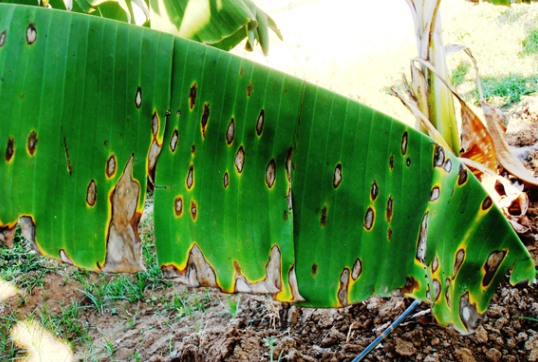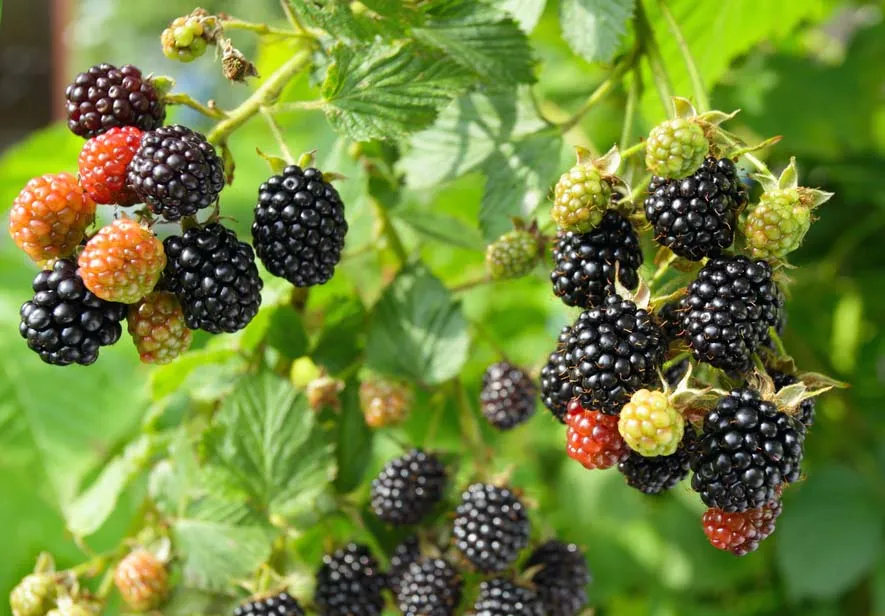Blueberries are loved all over for their sweet taste and health benefits. But sometimes, if you look close enough, you might find that the leaves of the blueberry plant turn red. This doesn’t just happen out of the blue; it’s actually a normal thing that happens to lots of blueberry bushes.
Why do these leaves change color? It’s not just for looks. It’s a signal that the blueberry plant is trying to adapt and stay healthy. We’ll explore the reasons behind red leaves in blueberry plants, what it means for the plant’s health, and tips for growing the best blueberries.
Table of Contents
Keeping Blueberry Leaves Green
Chlorophyll is the magic stuff that makes blueberry leaves green. It’s super important because it’s used in photosynthesis, which is how the plant makes its food. To keep the leaves green, blueberry plants need the right amount of food, water, and sunlight.
Nutrients like nitrogen, phosphorus, and potassium are key for making chlorophyll. If the plant doesn’t get enough of these, it might not grow properly, and its leaves could change color to yellow or brown.
Water is also really important. It moves the nutrients around the plant and helps with photosynthesis. If there isn’t enough water, the plant might get dehydrated, and its leaves might look wilted or yellow.
Blueberry plants love the sun, too. They do best in full sunlight but can manage a bit of shade. Good sunlight helps the plant make enough energy to grow well and keep its leaves a healthy green.
So, giving your blueberry plants the right balance of nutrients, enough water, and plenty of sunlight is the best way to keep the leaves green. This will help the blueberry plants stay healthy and give you lots of yummy berries.
Reasons for Red Blueberry Leaves and Fixes
There are quite a few reasons blueberry leaves might turn red. It could be because of not enough food for the plant, cold weather, sickness, the soil being too dense or the wrong pH, the shock of being moved, the type of plant it is, or just because it’s fall. Figuring out why it’s happening is the first step to making things better for your blueberry plants.
1. Not Enough Nutrients
Lack of important nutrients like nitrogen, phosphorus, or iron can make blueberry leaves turn red. Nitrogen helps the leaves grow, phosphorus is good for roots and berries, and iron helps make chlorophyll and keeps the leaves healthy.
To fix this, you might need to add some fertilizer. If your plants need nitrogen, you can use fertilizers like urea or ammonium sulfate. If phosphorus is the problem, look for a balanced fertilizer. If the plant needs iron, try using iron chelates or other iron-rich products.
Regular soil tests and adding the right stuff can stop nutrient problems before they start. Blueberries like soil that’s a bit acidic, so you might need to add sulfur or other acidy things to keep the pH right. Putting compost or old manure in the soil can also give the plants food and make the soil better.
Be careful not to give too much fertilizer though. Stick to a good fertilizing schedule and watch your plants for signs they’re missing something they need. This will help them stay healthy and make lots of blueberries.
2. Cold Weather
Cold weather can cause blueberry leaves to turn red. It’s because the cold damages the plant and makes it hard to make chlorophyll, which changes the color of the leaves.
To protect your plants from cold, cover them with thin blankets, burlap, or special frost cloth when it gets chilly, and remember to take the covers off during the day so the plants can get some sun and air.
Choosing blueberry varieties that can handle cold can also help. Some are tougher than others. Making sure the plants are well taken care of before winter helps too. They need good watering and fertilizing, and they should be pruned to keep air flowing and stop diseases from spreading.
In short, to protect your blueberry plants from the cold, cover them up, pick the right types for your weather, and keep them happy all year round.
3. Diseases
Diseases can also make blueberry leaves red. Things like fungi, which cause diseases like anthracnose, leaf rust, and powdery mildew, or bacteria, which cause diseases like bacterial leaf scorch, could be the culprits.
If your plants get sick, you need to figure out what’s wrong and treat it. You might need fungicides for fungal diseases or you might need to get rid of sick plants to stop bacterial infections. Always use chemicals carefully and only as directed.
To prevent diseases, keep your plants clean and tidy. Regularly trim them for good air flow and clean up any dead leaves or debris. This stops bad fungi or bacteria from growing.
Picking varieties of blueberry plants that are less likely to get sick is smart, too. If you’ve had problems before, look for types that are known for being disease-resistant. These have been specially developed to be tougher against sickness, which means you’ll have a better chance of keeping your plants and berries healthy.
as part of the uniqueness of these plants while focusing on their other positive attributes is advisable.Overall, recognizing that genetics plays a role in the color of blueberry leaves helps gardeners understand that some variation in leaf color is normal and doesn’t always indicate a problem. Ensuring that plants receive the right care will help highlight the best qualities of various blueberry varieties, regardless of leaf color.
Choosing blueberry plants that fit your preferences and needs while providing them with the necessary care allows you to enjoy the beauty and bounty that blueberries offer. It’s a balance of accepting genetic traits and managing the plant’s health with good gardening practices.
To sum up, genetics can cause leaves to turn red, but this isn’t always a sign of trouble. Picking varieties that naturally have less red or purple in their leaves can be the answer if you prefer green foliage. However, it’s still vital to look after all blueberry plants well to keep them healthy.
Conclusion
A variety of factors can cause blueberry leaves to turn red, such as nutrient deficiencies, pests, diseases, soil pH issues, compacted soil, transplant shock, autumn changes, and genetics. Identifying the cause is the first step in addressing the discoloration.
Regular soil testing, proper fertilization, pest and disease control, careful transplanting, seasonally appropriate care, aeration, and the selection of suitably adapted blueberry varieties will all contribute to the health and vitality of blueberry plants. By understanding and managing these factors, gardeners can enjoy lush, healthy blueberry bushes with the added bonus of delicious fruit.
Remember, not all red leaves signal problems—sometimes they’re just part of what makes a blueberry plant unique. By keeping plants well-maintained and healthy, most issues that could turn blueberry leaves red can usually be prevented or resolved.
Trading off other benefits could make some red or purple leaf traits necessary.
Putting it simply, the color of blueberry leaves can be affected by their genes, and choosing the right types of blueberry plants can help cut down on the chances of the leaves turning red or purple. But remember, genes aren’t always the reason for leaf color changes—it’s still very important to take good care of the plant to keep it healthy.
What Red Leaves Mean for the Plant
When a blueberry plant has red leaves, it doesn’t always mean something bad. If the leaves turn red because of the season changing to autumn, the plant is usually just fine.
At this time, the plant gets ready for winter sleep by sending nutrients from the leaves down to the roots and stems to store. This step is super important to make sure the plant stays well during the cold.
When to Worry About Red Leaves
Some types of blueberry bushes have leaves that naturally look red, but for most other kinds, red leaves can signal that there’s a problem.
If the leaves on your blueberry bush turn red and it’s not fall, it’s a good idea to find out why and figure out what to do about it.
Here are some red flags to watch out for with your blueberry plant:
- If a lot of leaves are quickly turning red.
- If the red leaves are also wilting or turning brown.
- If the plant is not growing well or the berries aren’t as many as before.
Seeing any of these signs means you should take action right away to stop the plant from getting worse.
To figure out what’s making the leaves turn red, check if your blueberry plant is missing any nutrients, got too cold, caught a disease, is in the wrong soil, has packed soi or shock from moving. After finding the reason, you can fix the issue.
You might just need to change how much you water or feed the plant. But sometimes, you may have to do more, like treat the plant if it’s sick or make the soil drain better.
If your blueberry plant’s leaves are turning red and it’s not because of autumn, you must check out the cause and act fast. Figuring out the problem and solving it quickly will help your blueberry plant stay healthy and make lots of berries.
How to Keep Blueberry Plants From Getting Red Leaves
For a blueberry plant without red leaves, you need to take proper care of it. Try these tips to prevent the issue and help your plant grow strong with plenty of berries:
- Give the Right Nutrients: Blueberries need certain things to grow, like nitrogen, phosphorus, potassium, and iron. Use special blueberry fertilizers to give them these nutrients and stop red leaves from a lack of food.
- Keep the Soil Acidic: These plants like their soil more acidic, with a pH from 4.5 to 5.5. If the soil isn’t right, the plants can’t take in what they need, and leaves might turn red. Test the soil and change the pH if necessary.
- Drainage is Key: Blueberries can’t handle sitting in water; their roots could rot. Make sure the soil is well-draining and don’t water too much.
- Watch Out for Cold: Blueberry bushes don’t like getting too cold, as it could turn their leaves red. When it’s freezing, cover your plants up to keep them warm.
- Be Careful When Moving Them: Moving a plant to a new place can stress it and lead to red leaves. Make sure the new spot is very similar and help your plant adjust by giving it plenty of water and food.
Stick to these steps and you can keep those blueberry leaves nice and green, and the plant will thank you with lots of yummy berries.
In Conclusion
When blueberry leaves turn red, it could mean there’s a problem somewhere. By figuring out if it’s because of not enough food, too cold weather, sickness, soil problems, tight soil, moving stress, or just the mix of plant genes, you can then fix what’s wrong and protect the plant.
Take good care of your blueberry plants. Give them the food and environment they need, like the right soil pH and protection from the cold, and be gentle when transplanting. Doing these things can prevent red leaves and help your blueberries grow healthy and delicious.


